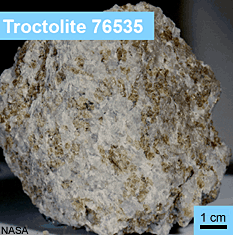Planetary scientists sharing ideas and discoveries.
Planetary Science and Resources Discoveries (PSRD) is an educational site sharing the latest research on the nature and origin of the Moon, meteorites, asteroids, planets, and other materials in our Solar System, and on identifying potential resources on those bodies that could be tapped for the benefit of people on Earth. Original support came from the Planetary Science Division of NASA's Science Mission Directorate and Hawai'i Space Grant Consortium. This site is a vital link for what's new in planetary and space sciences, space resources exploration, and learning how science works.
|
» Detailed Microanalysis of One Lunar Rock Provides Insight into Formation of the Entire Lunar Magnesian Suite RECENT HEADLINE ARTICLES. [ V I E W A L L ]
» Heating Meteorites to Understand Exoplanet Atmospheres
» Seeing What We Have Never Seen Before: Low-Frequency Radio Astronomy from the Moon
» The Tarnished Moon
» Hydrogen Isotopes in Small Lunar Samples Provide Clues to the Origin of the Earth and Moon MOON RESEARCH AND DISCOVERIES. [ V I E W A L L ]
|

In this series of reports PSRD gives quick views of big advances in planetary sciences, with links to further details. » Visit to a New Mineralogy Museum: The University of Arizona Alfie Norville Gem & Mineral Museum -- See spectacular mineral displays and more. NEWS LINKS WILL OPEN IN NEW WINDOWS. PSRD media links. This section of PSRD contains annotated slide sets that are associated with our headline articles. We hope you find the slides useful for your own talks and presentations. In this series of articles PSRD highlights the essential tools and amazing technology used by talented scientists seeking to unravel how the solar system formed. This section of PSRD contains links to great information about meteorites, planetary science, and classroom activities.
Search + site navigation links are on the top and bottom of each page. |
|
|
[ About PSRD | Archive | CosmoSparks | Search | Subscribe ] [ Glossary | General Resources | Comments | Top of page ] |
|
2023
|

